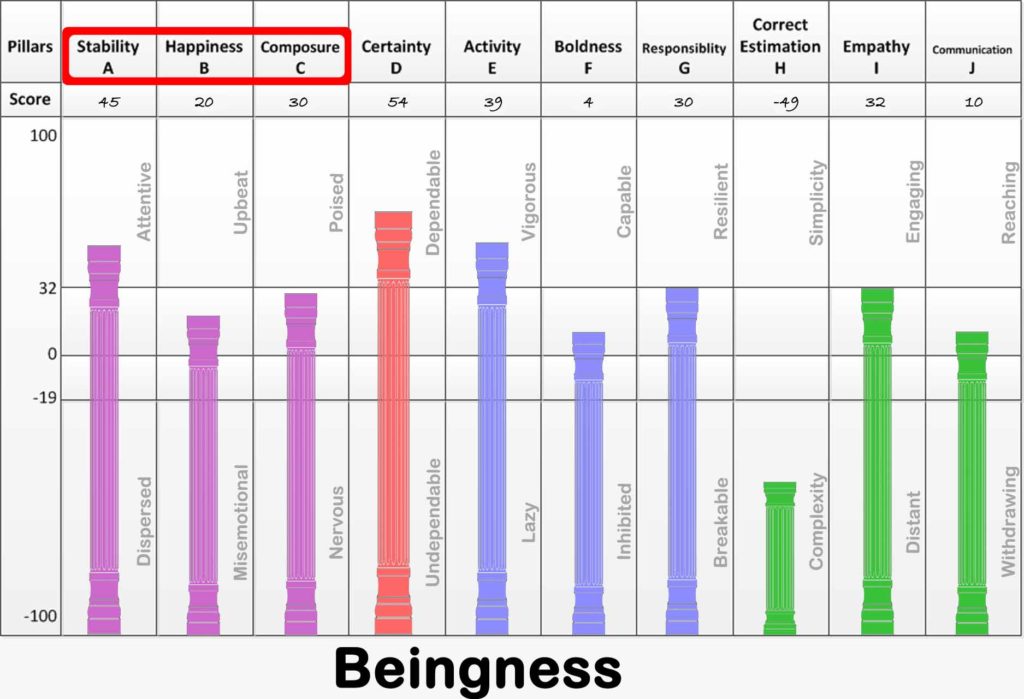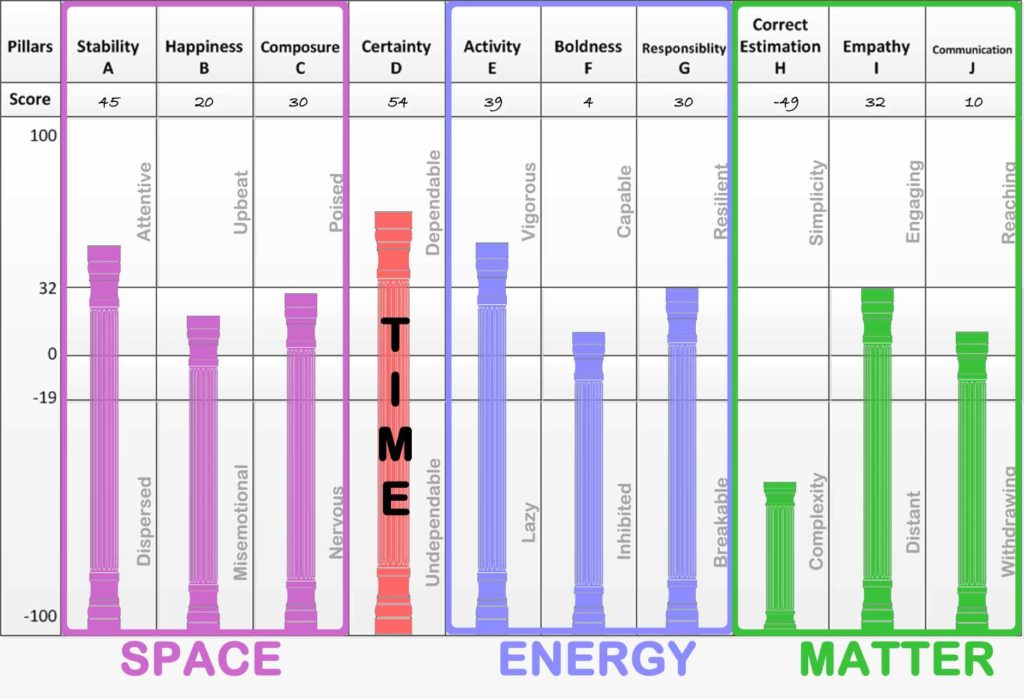Unraveling the Human Mystery
These are ten reasons how this profile can help you unravel the mystery of human behavior:
1) The Certainty Trait (“D”) shows us the reliability of the profile. +32 and higher on this trait means the result is stable and not subject to change. Below +32 the profile changes with the person’s mind. The lower the “D” trait goes, the more flexible the change will be. This is one of three reasons why the “D” trait is the main reference point of the profile. See The Manual for more details on “Certainty.”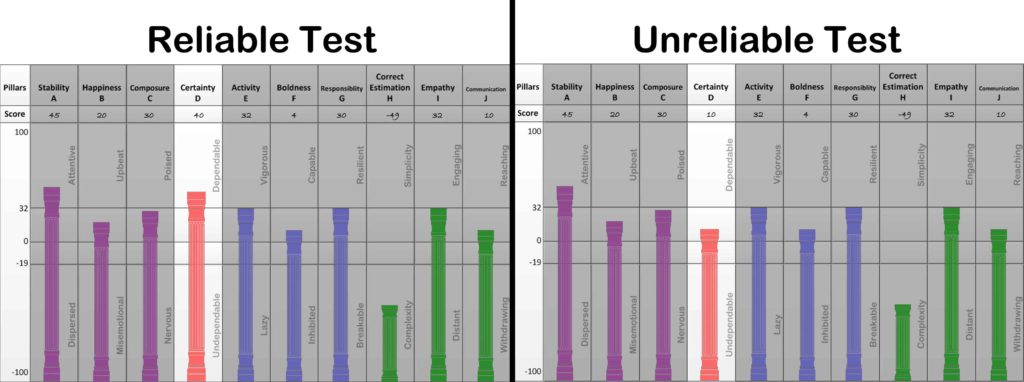
2) If the Activity Trait (E) is ABOVE the “D” trait, it means the person likes to try new things. If the “E” is below the “D” trait it means the person wants to stay with what he or she already knows. He does not like new things. This tells you important details about the person with whom you are working. Tips about how this is done are in The Manual.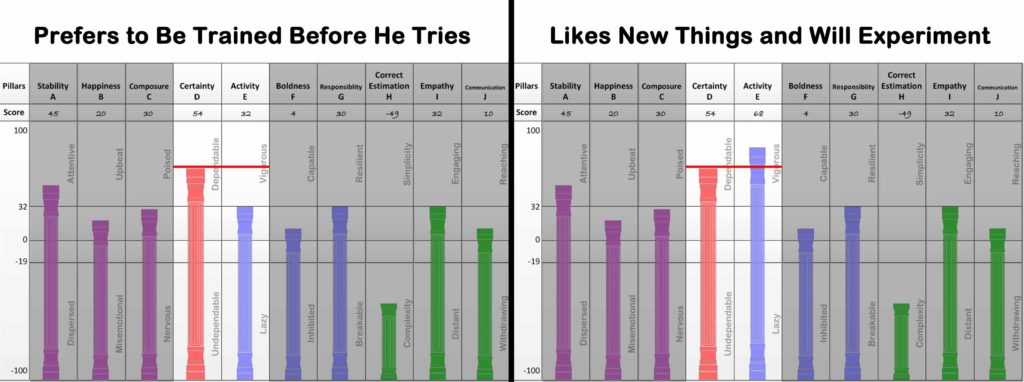
3) If the “D” trait is above +32, the lowest trait on the profile will be the one the person most “dramatizes” and will be the area that is most upsetting for him. This is your first target for correction, and would be the subject of your conversation with the person. If the “D” is NOT above +32, this trait itself is the subject of that conversation. How you would approach it is covered in The Manual.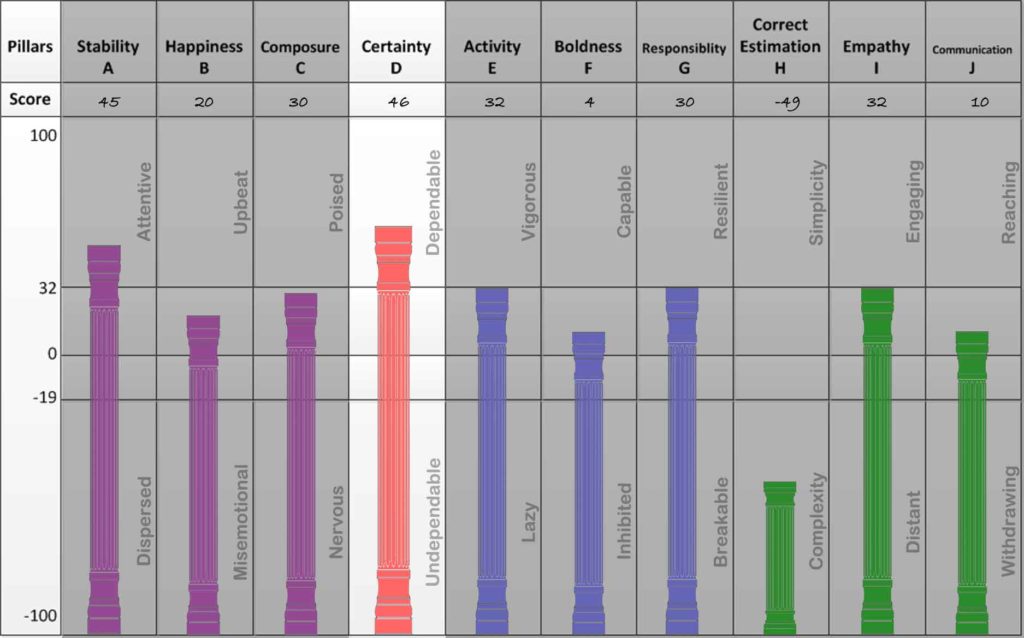
4) AB&C traits are about identity. They are the “BE” factor and therefore permeate the rest of the profile and determine it’s “tone.”
5) EF&G show us the way this “beingness” (expressed in AB&C) handles the environment. Is he busy? Does he finish what he starts? Is he tough as nails or fragile as glass?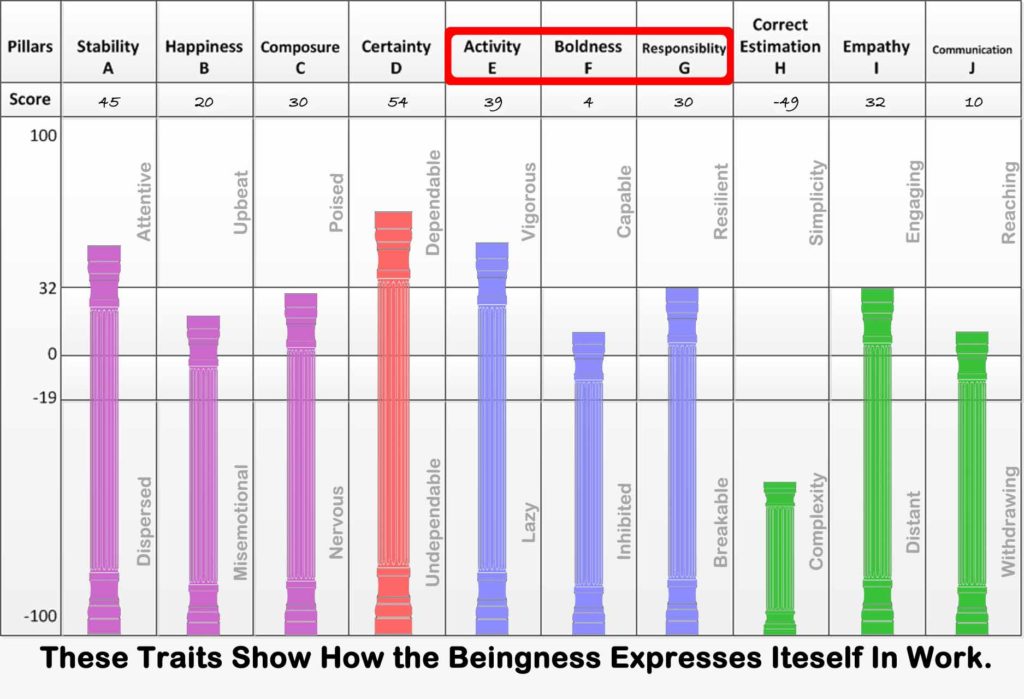
6) HI&J show us how the “beingness” (AB&C) performs in relationships of any kind. Does he see what is there or does he see others through his own past? Is he intimate or distant? Does he talk a lot or is he withdrawn?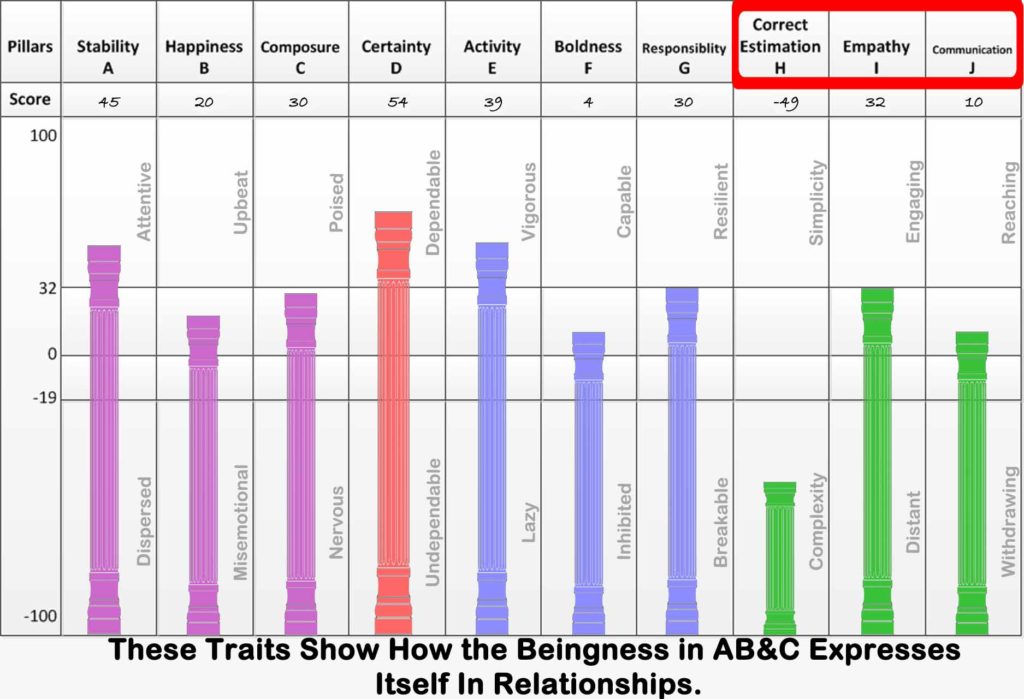
7) A “Compulsive Trait” is one the person does not control and what he must do. These traits are those that appear above the “D” trait when the “D” is +32 or higher. Compulsive traits turn ON or OFF quite suddenly. When and how this happens is determined by the other traits. There is much to learn in The Manual concerning these phenomena.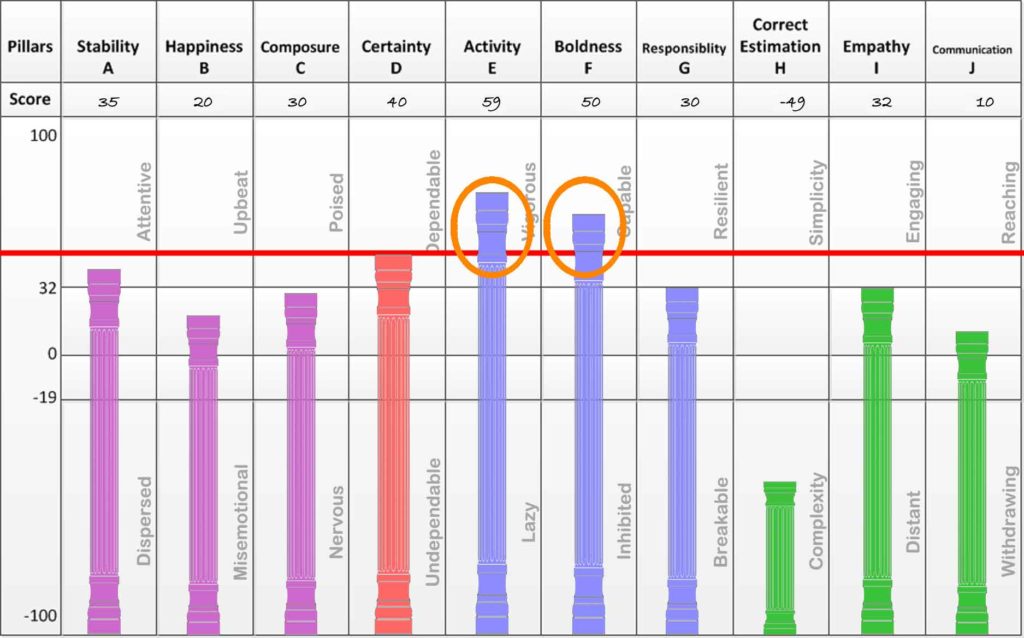
8) The profile is a picture of a moment in TIME that displays the way the person deals with SPACE (ABC), ENERGY (EFG) and MATTER (HIJ).
9) The profile shows us where the person is, who the person is, what potentiality the person has and what needs to be addressed to achieve that potential.
10) The profile is actually ten different examinations that reveal ten “pillars” of personality. The traits in combination (i.e. the syndromes) tell the “story” of the person and are far more important than any trait taken alone and out of the context of the rest.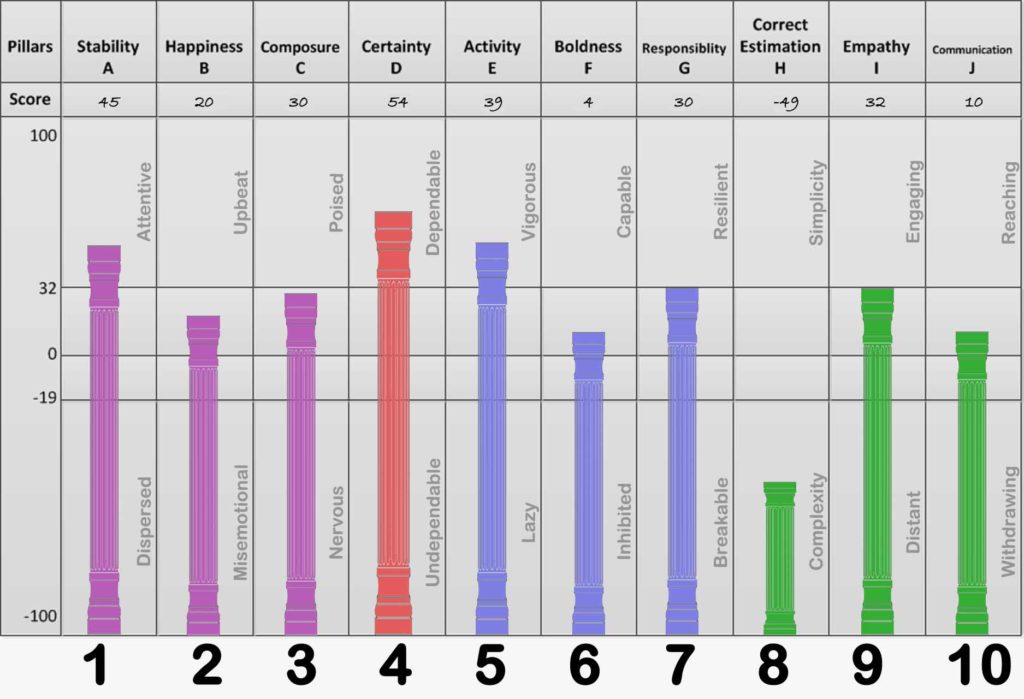
BONUS TIP: The “B” trait and the “H” trait are the most important traits on the test (if the “D” trait is above +32.) The Manual provides full details as to why.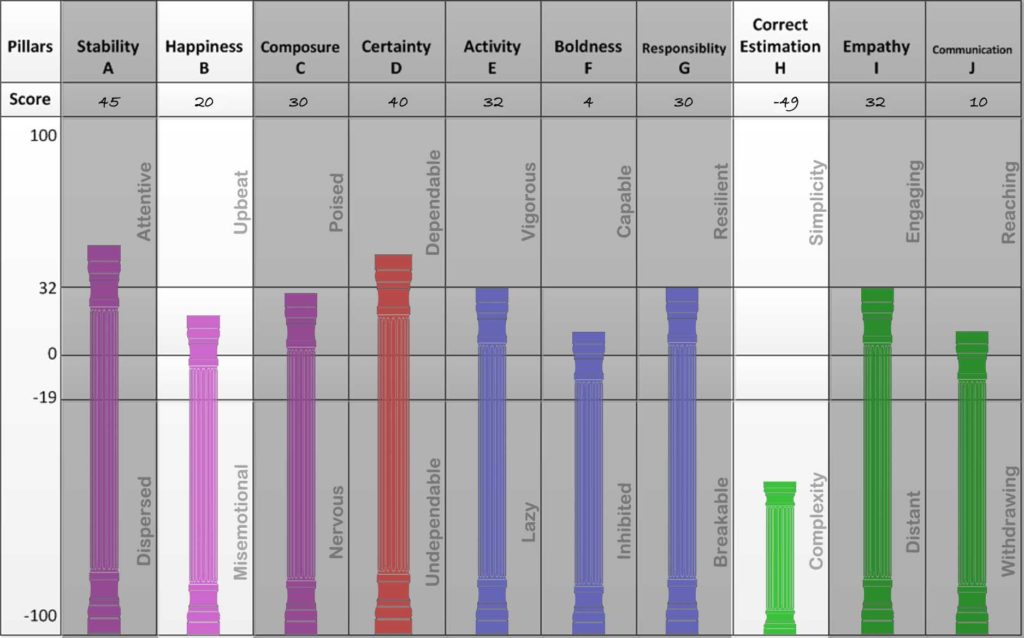
People are an adventure. This profile is a map that reveals the hidden potentials of a person and enable him to discover the one treasure he has always desired: himself.
–Vulindleyla, Master Evaluator

